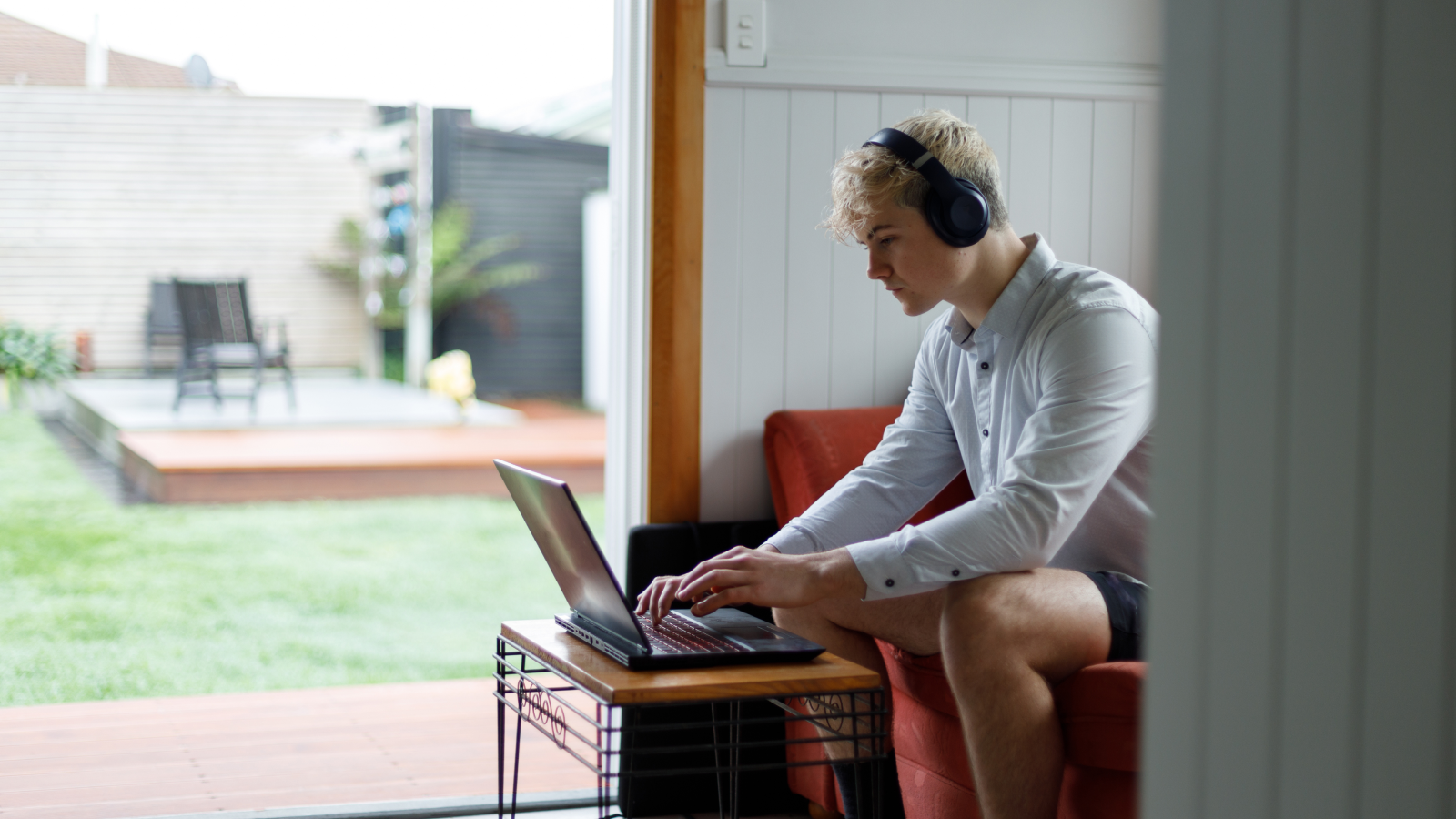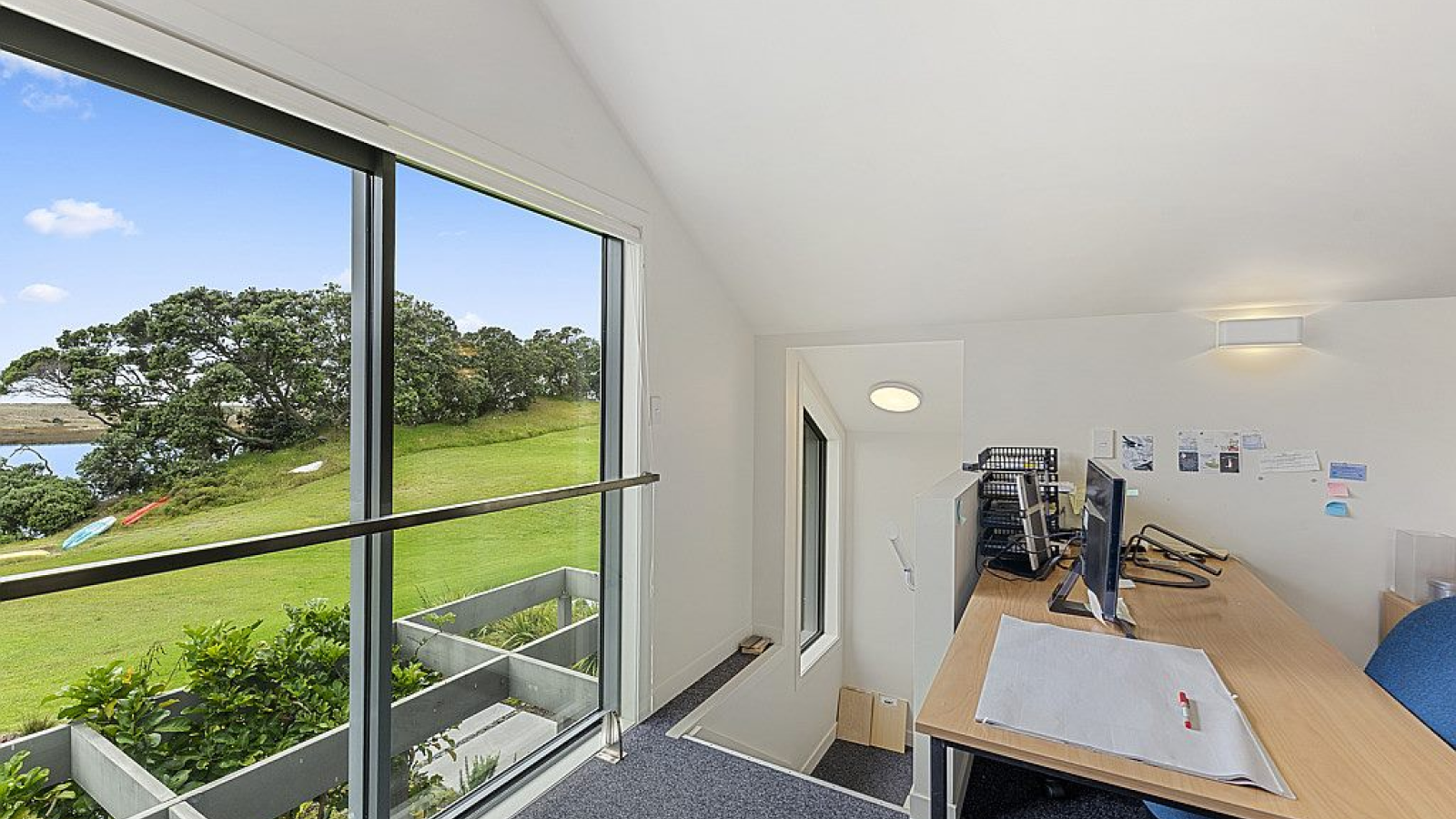Feature article
The trend for the modern workplace and home offices
The workplace has changed forever after the Covid-19 pandemic
It’s official, the workplace has changed forever after the Covid-19 pandemic. Organisations have moved from an office-centric culture to flexible hybrid or remote working, giving employees more options on where they live and how they work.
Comparing November 2022 with the previous year, our 2023 State of the Nation report found that the percentage of job listings on site where the role could be done working from home was up 44%.
As part of this new world, Trade Me Jobs expects growing numbers of Kiwis to be moving to the regions for more work life balance while maintaining their current salary.
Jarrod Haar, Professor of Management and Māori Business at Massey University, whose research has found up to 48% of New Zealanders are working in a hybrid way, says he’s not surprised that people are using flexible working as a way to make a regional move. If staff have worked in the business for a while, employers are often open to a member of staff working from their favourite regional town, rather than losing them to another employer.
Staff can come into the office once or twice a month to Auckland or Wellington, suggest the management professor. Pre-2019, if a member of staff moved from Auckland to work from Palmerston North or Tauranga, people would warn your career might suffer, says Jarrod. But these days, your standing in the company should be just fine. .
The regions offer a lot of opportunity, given the financial challenges people are facing. “If you’re earning the same kind of money but expenses have dropped and quality of life goes up, you’d have to say, ‘why not?’” he adds.
The management expert says he’s also seen examples of companies making the move to the regions themselves, knowing that some of their staff will happily come with them. In the last couple of years, Fletcher Building subsidiary, Winstone Wallboard moved from Auckland to Tauriko in the Bay of Plenty and Brother International NZ has also made the move there from Wellington. In each case the companies brought good numbers of workers with them from Auckland and Wellington as well as hiring local staff.
At the other end of the scale, says Priority One General Manager, Greg Simmonds, says young companies are also transferring to the Bay of Plenty. Bio Gold, which makes products from pine pollen, is moving to Whakatāne from Auckland in late March. Founder, Carl Meyer and his staff have mainly been working remotely but because his business is in the forestry industry, the Bay of Plenty is an ideal place to base the company. “It makes a lot of strategic sense,” he says.The region has a good group of investors whose values align with his too, says Carl, who plans to hire locally when he arrives.
Regional property markets well-positioned for remote working
Remote and hybrid working is having a big effect on the housing market and what people value in a property. Any home in the big cities that has a study or office is very attractive to buyers. And this provision of a workspace in the home is growing in certain regional property markets too.
Our research found that three popular regions –Taranaki (43%), Bay of Plenty (34%) and Northland (29%) – have seen big increases in listings with studies or home offices.
Meanwhile, in the Bay of Plenty, there’s always a good supply of affordable lifestyle properties well set up for remote working. Powers Realty agent Sara Davis is currently selling an eco-home with double glazing and solar roof panels in Tauranga’s Welcome Bay.
Expecting to sell for north of $1.4 million, this is a lot of house for the money – 225 sq m, four bedrooms and two bathrooms, a loft style studio and built-in desk, all on 4,507 sq m of land.
Of the groups who viewed the property at an early open home, half of the buyers were people who worked from home or ran businesses from their property, and planned to do the same at the Welcome Bay house, says the Powers Realty agent.
In New Plymouth, Harcourts agent Glenn Green says a current listing in popular Strandon is a perfect example of a home that will attract a big city worker who’s used to a certain buzz, but wants to work from home. It’s a big standalone house with three bedrooms and an office and you’re next to the beach and cafes. “People can’t believe the value they’re getting so close to the city, “ says Glenn.
Lifestyle properties in Taranaki also offer great bang for the buck with studios and extra space for those working from home, he adds.
Another lifestyle property in Waipu, Northland likely to appeal to a home owner interested in working from home, is an architecturally designed house which will is already set up for someone to work from home, says Ray White Bream Bay agent, Carleen Still. The architect owner currently runs his practice from a big space above the garage, which looks straight out to the water, she says.
Home offices should have good natural light, says Carleen. And there are plenty of walks and hikes around the estuary property for the lunchtime break.
635 Cove Rd, Waipu, Whangarei, Northland
New home builders factoring in home offices
Of course, smart house builders have caught onto the trend that more people are working from home, and expect the extra of a study or more in their new builds.
Wairarapa house builder, Belham Developments is including home offices in all their large home designs, says director, Hamish Duncan. And for medium-sized homes, they’ll have an office nook with a built-in desk, drawers, and small cabinetry.
In a newly completed Belham Developments Greytown property of over 300 sq m, selling through Ray White agent, Melinda Coleman, the home office has been designed to be at the front of the house. This is handy so clients or visitors don’t walk through the rest of the house when they come for an appointment, she says.
According to Hamish, when his in-house team are designing a home office, the room will usually have a large floor to ceiling window to give the home worker something pleasant to look at and good light throughout the day.
The developer says they’ll also have a bedroom that’s kept separate from the rest of the house, and some people will convert that into a home office too. This makes sense for many homeowners. Increasingly it’s more than one person working from home in the house, so two studies aren’t unusual in a larger property.


.png)
